Animals- Food and Shelter - 1 Class 1 Worksheet Science
| Table of contents |

|
| Q1: Fill in the Blanks |

|
| Q2: TRUE or FALSE |

|
| Q3: Write what do these animals eat? |

|
| Q4: Name two animals that eat the following: |

|
| Q5: Match the Following |

|
| Q6: Short Answer Questions |

|
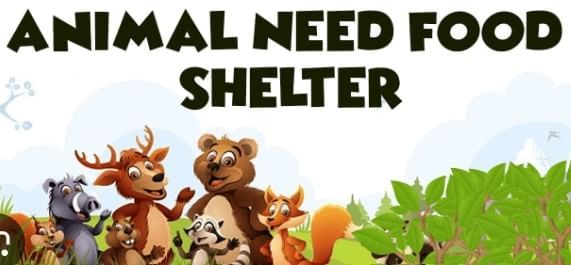
Q1: Fill in the Blanks
(Pick the correct word from the options in brackets)(i) The _____ makes a web. (housefly/spider)
(ii) The _____ lives in a stable. (horse/hen)
(iii) The _____ lives in a cave. (lion/monkey)
(iv) The parrot eats _____ . (rats/nuts)
(v) The dog lives in a _____ . (kennel/coop)
Ans:
(i) The spider makes a web.
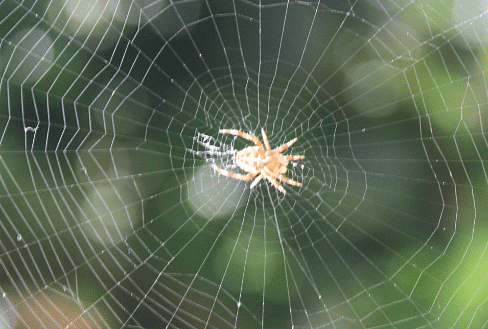 Spider's Web(ii) The horse lives in a stable.
Spider's Web(ii) The horse lives in a stable.
(iii) The lion lives in a cave.
(iv) The parrot eats nuts.
(v) The dog lives in a kennel.
 Kennel
Kennel
Q2: TRUE or FALSE
(Write TRUE or FALSE for given statements)(i) Tiger eats leaves and plants.
Ans: False
(ii) Dog lives in a den.
Ans: False
(iii) Birds eat grains.
Ans: True
(iv) Monkeys make nest on trees.
Ans: False
(v) Birds live in nests.
Ans: True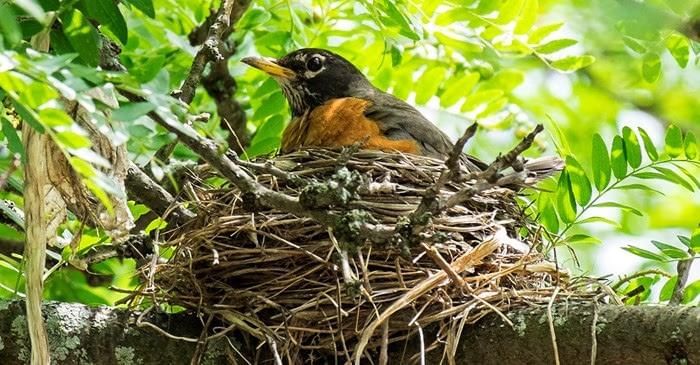 Bird's Nest
Bird's Nest
Q3: Write what do these animals eat?
(i) Deer eats _______
(ii) Tiger eats _______
(iii) Rabbit eats _______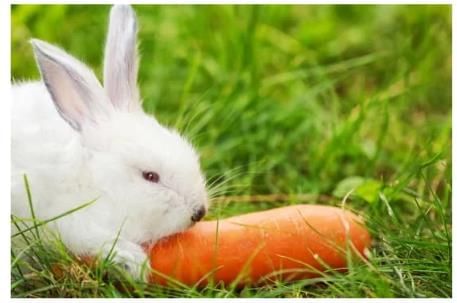 (iv) Hen eats _______
(iv) Hen eats _______
(v) Parrot eats _______
(vi) Elephant eats _______
(vii) Pigeon eats _______
(viii) Lizard eats _______
(ix) Rat eats _______
(x) Snake eats _______
Ans:
(i) Deer eats leaves
(ii) Tiger eats flesh
(iii) Rabbit eats fresh vegetables
(iv) Hen eats grains
(v) Parrot eats nuts
(vi) Elephant eats plants
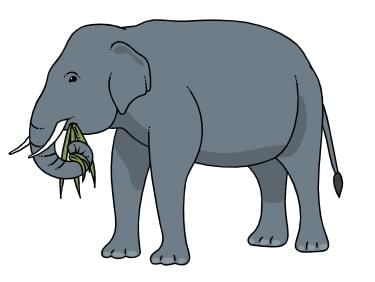 (vii) Pigeon eats grains or seeds
(vii) Pigeon eats grains or seeds
(viii) Lizard eats insects
(ix) Rat eats seeds, nuts
(x) Snake eats insects
Q4: Name two animals that eat the following:
(i) Fruits - _______ , _______
(ii) Grains - _______ , _______
(iii) Insects - _______ , _______
(iv) Flesh of animals - _______ , _______
(v) Grass - _______ , _______
Ans:
(i) Fruits - monkeys, squirrels
(ii) Grains - hens, pigeons
(iii) Insects - lizards, frogs
(iv) Flesh of animals - Tiger, lion
(v) Grass - Cows, goats
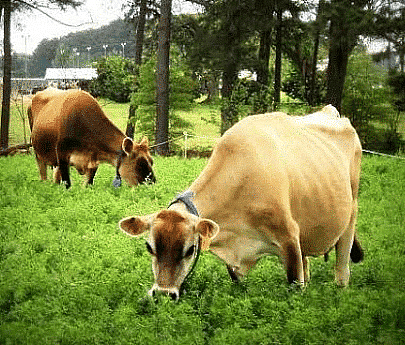
Q5: Match the Following
Ans:
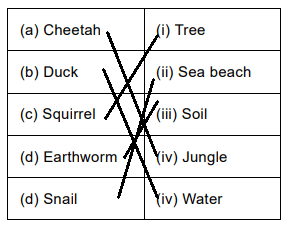
Q6: Short Answer Questions
(i) Why do animals need a home?
Ans: Like humans, all the animals need shelter to protect them from intense nature and also to save them from predators. All the animals need to save their lives from natural calamities, such as landslides, forest fires etc.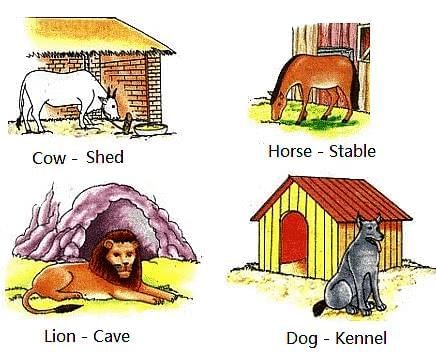
(ii) Where do domestic animals live?
Ans: The most common animals that live in houses are dogs and cats. Some animals that live with humans are too big or too messy to live in a house. Animals like horses, cows, goats, sheep, and pigs can be pets, but they usually live in barns.
(iii) What is a prey?
Ans: An animal that is hunted and killed by another animal (predator) for food is called a prey.
(iv) Name two sea animals.
Ans: Fish, Shark, and Octopus are few sea animals.

(v) What is a bee-hive?
Ans: A beehive is an enclosed structure in which some honey bee species live and raise their young. Though the word beehive is commonly used to describe the nest of any bee.
|
33 videos|215 docs|44 tests
|
FAQs on Animals- Food and Shelter - 1 Class 1 Worksheet Science
| 1. What are the different types of food that animals eat? |  |
| 2. How do animals find their shelter? |  |
| 3. Why is shelter important for animals? |  |
| 4. What role does food play in an animal's habitat? |  |
| 5. How do animals adapt to find food and shelter? |  |















